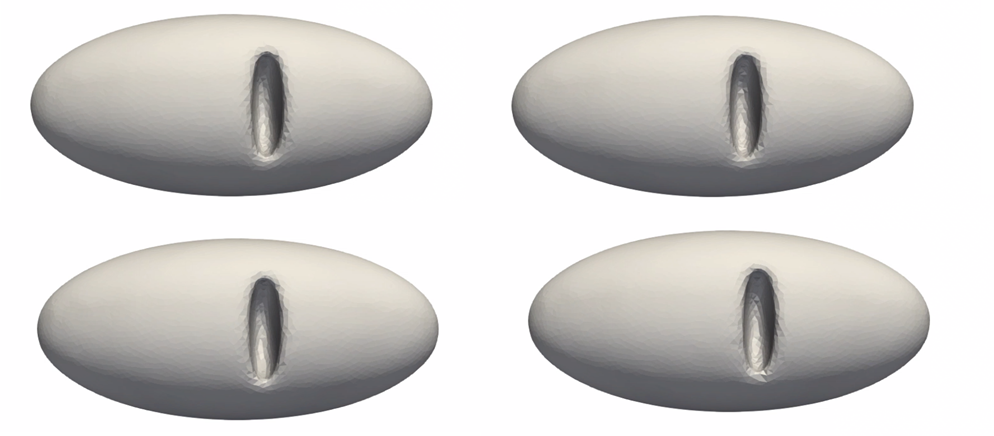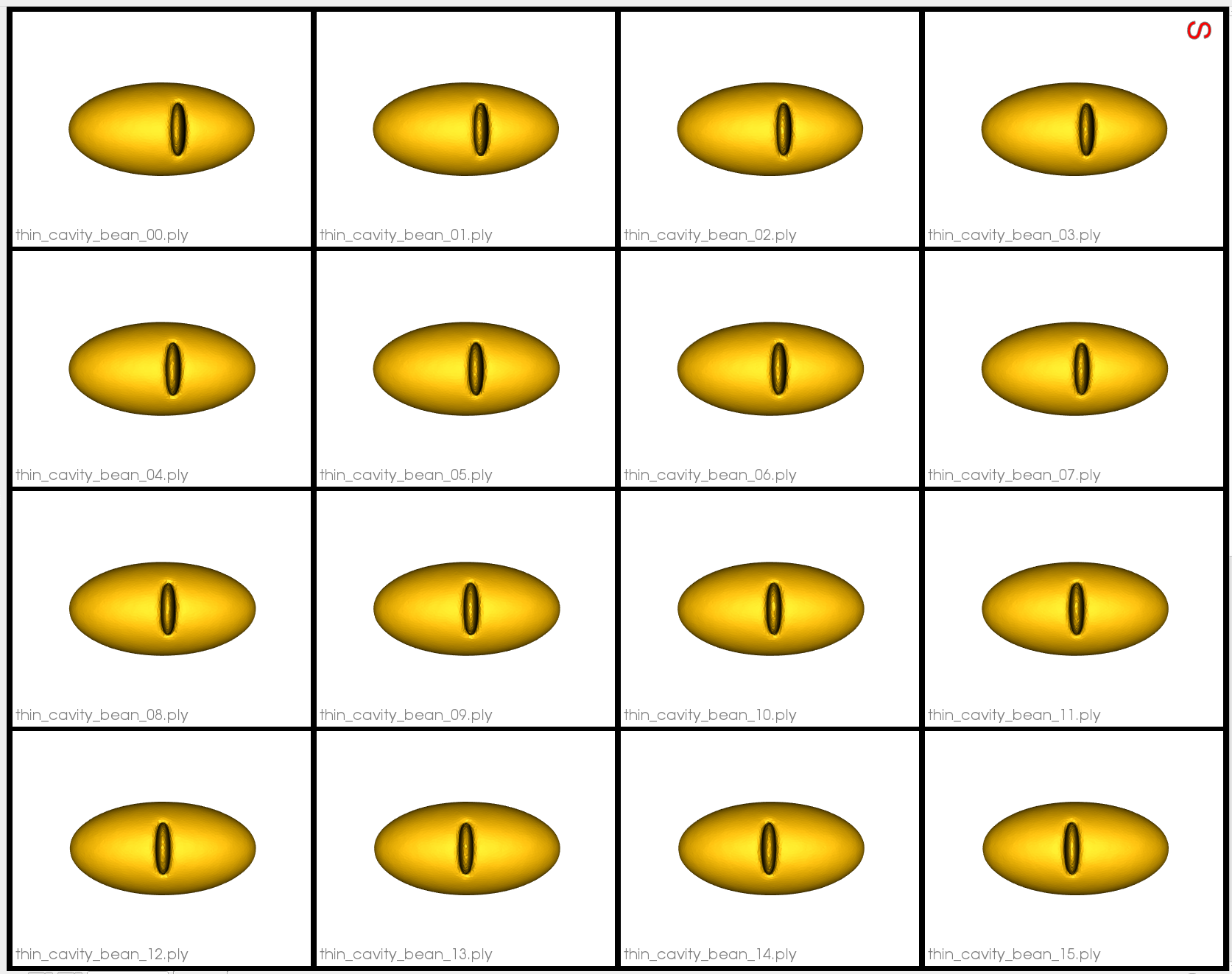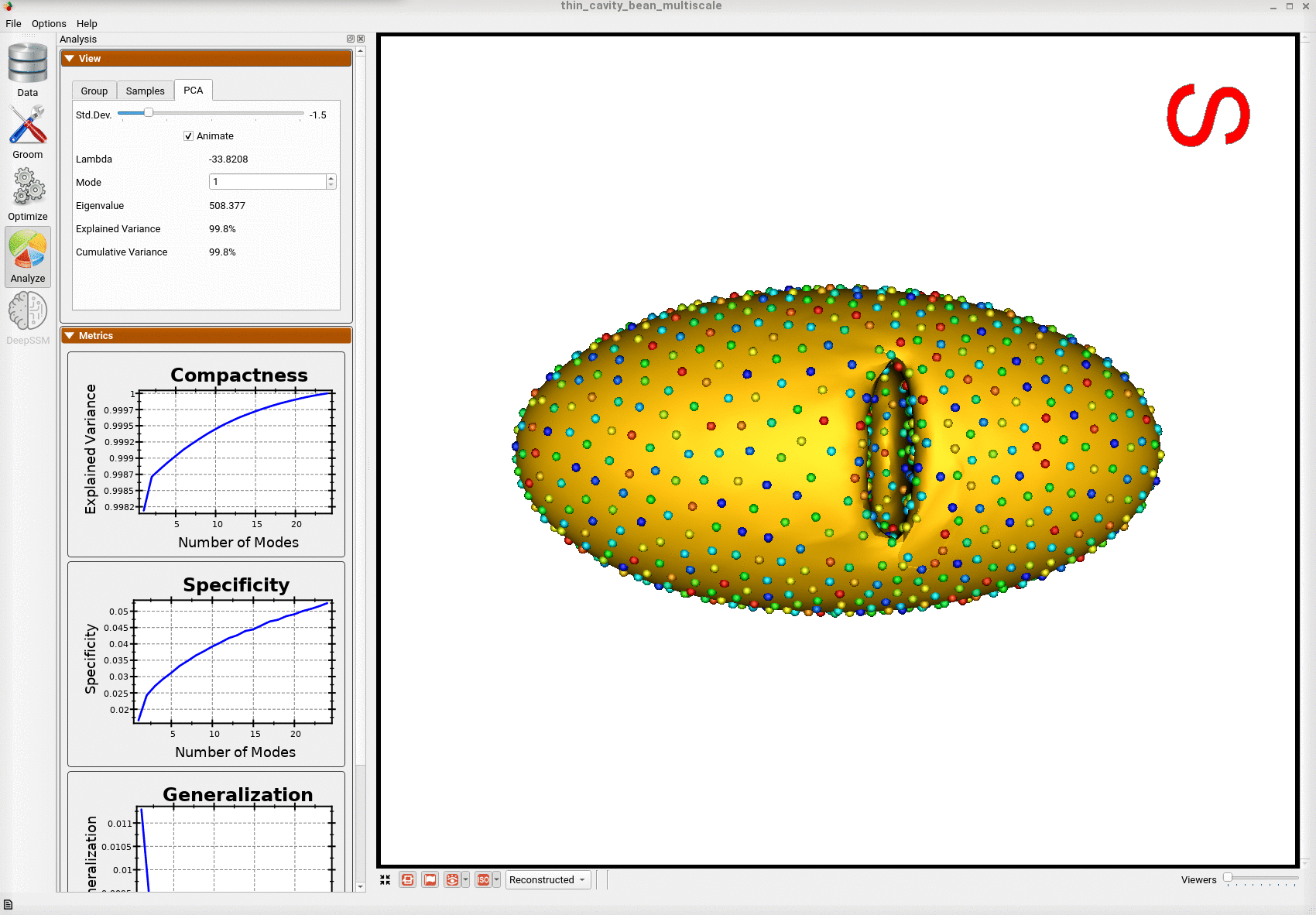Thin Cavity Bean: Shape Model with Geodesic Distances
What is the Use Case?
The thin_cavity_bean use case demonstrates using geodesic distance based repulsion for mesh domains in optimization.
Here is an example of the data:

The shapes vary only in location of the thin cavity. This use case demonstrates that ShapeWorks optimization with geodescic distance can correctly capture this mode of variation.
Grooming Steps
In this use case, we download pre-groomed data. Here are some examples of the meshes:

Relevant Arguments
--use_subsample --num_subsample --use_single_scale --tiny_test
Optimization Parameters
The python code for the use case calls the optimize command of ShapeWorks which reads the project sheet with the shape filenames and optimization parameter values. See Project excel file for details regarding creating the project sheet.
Below are the default optimization parameters for this use case.
{
"number_of_particles": 1024,
"use_normals": 1,
"normals_strength": 10.0,
"checkpointing_interval": 200,
"keep_checkpoints": 0,
"iterations_per_split": 300,
"optimization_iterations": 2500,
"starting_regularization": 3000,
"ending_regularization": 0.1,
"recompute_regularization_interval": 1,
"domains_per_shape": 1,
"relative_weighting": 15,
"initial_relative_weighting": 0.01,
"procrustes_interval": 0,
"procrustes_scaling": 0,
"save_init_splits": 0,
"verbosity": 0,
"use_geodesic_distance": 1,
}
Note geodesics_enabled is set to on.
Analyzing Shape Model
Here we can see the resulting shape model correctly captures the moving cavity as the only mode of variation.
